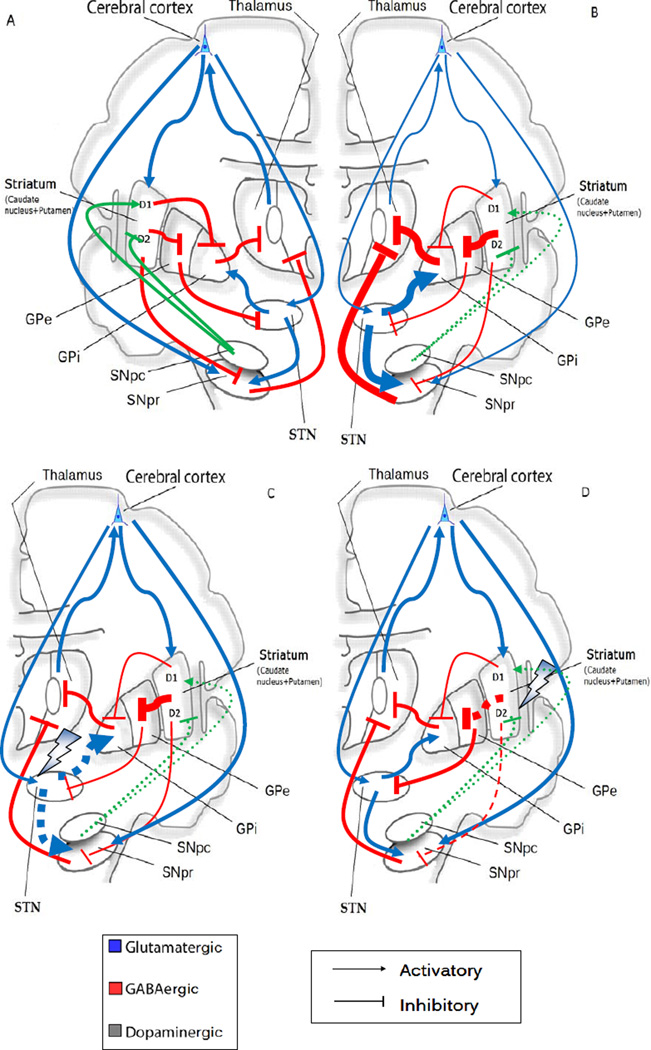Fig. (4).
Classical model of normal activity of the basal ganglia and malfunctioning in PD (reviewed in Ref. [114]). Thin arrows indicate downregulation and thick arrows upregulation. Blue arrows show glutamatergic activatory efferents, red arrows indicate inhibitory GABAergic efferents and green arrows, activatory/inhibitory projections. (A) The ‘direct pathway’ is comprised of striatal neurons with D1 activatory dopaminergic receptors and their GABAergic efferent projections to the globus pallidus internus (GPi) which together the SNpr transmit inhibitory signals via GABAergic output to the thalamic ventral anterior (VA) nucleus. The ‘indirect pathway’ is comprised of striatal neurons with D2 inhibitory dopaminergic receptors. The striatum (composed of caudate and putamen) projects GABAergic output to the globus pallidus externus (GPe). From this point, they synapse to the nucleus subthalamicus (STN), from which glutamatergic activatory projections reach the GPi and the substantia nigra (SNpc/SNpr). The subthalamic nucleus also gets excitatory input directly from the cortex and induces the GPi to increase GABA release in the VA. While GPe keeps it in check, the SNpc dopamine binds D2 receptors to inhibit this pathway, blocking the inhibition of the subthalamic circuit by GPe. Additionally, the striatum and the SNpc receive glutamatergic efferents from the neocortex.
(B) Loss of dopaminergic afferents (broken green arrows) entails a dis-repression of striatal D2 neurons leads to over-activity of their GABAergic projections to the GPe, and this in turn decreases its GABAergic efferent activity to the STN. As a consequence, STN glutamatergic projections to the GPi render over-active, increasing GABAergic output from the GPi to the VA. On the contrary, the D1 striatal neurons are underactive, therefore the GABAergic output to the GPi and to the SNpr are reduced and consequently the GABAergic output from both to the VA is increased. As a consequence in both cases, the loss of dopaminergic projections causes a failure to desinhibit the thalamocortical output, leading to bradykinesia, a typical symptom in PD. (C) (D) Possible targets at the basal ganglia level of NMDAR antagonists amantadine and memantine. Broken arrows mean suppression of output projections. A putative target is the STN (C), overactive in PD by blocking the subthalamic stimulation of GPi and a normalization of downstream thalamocortical connections. Other target could be the indirect pathway from the striatum (D), triggering a dis-repression of SNpr and leading to a normalization of STN activity and therefore a thalamic-cortical neuron well-functioning.

